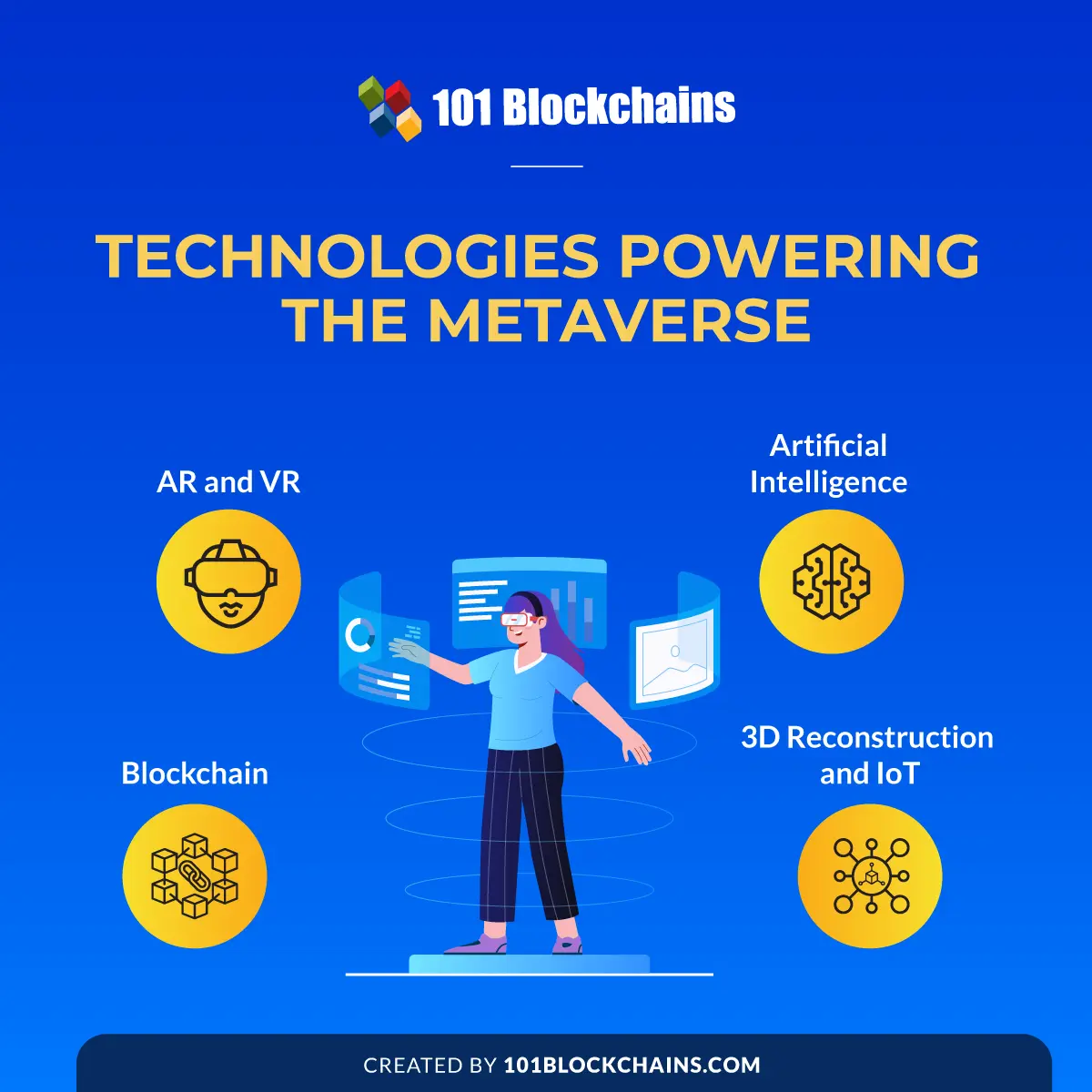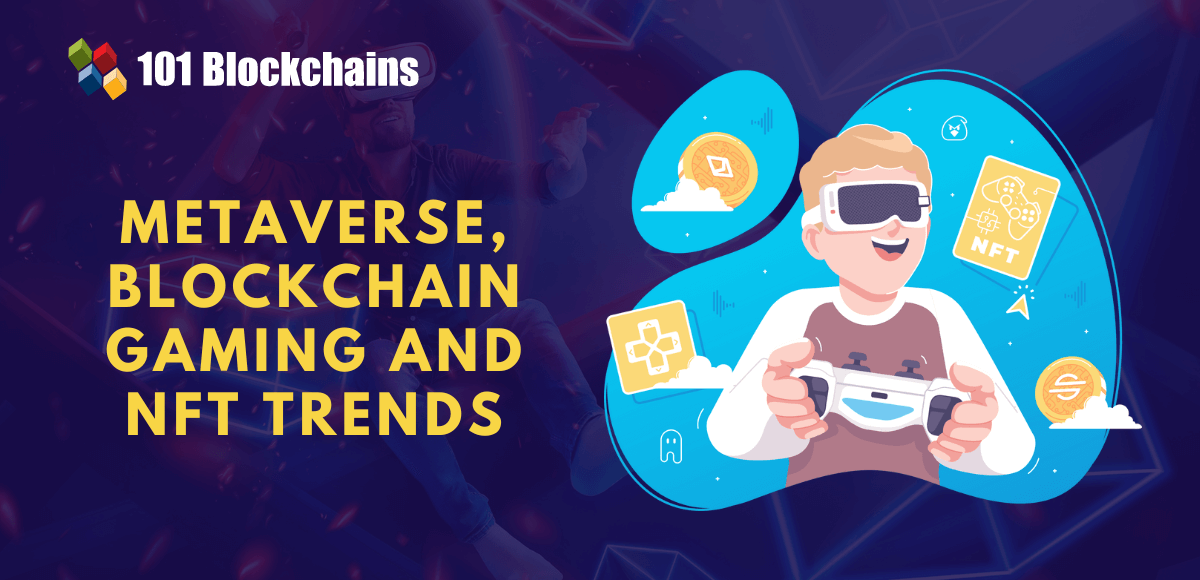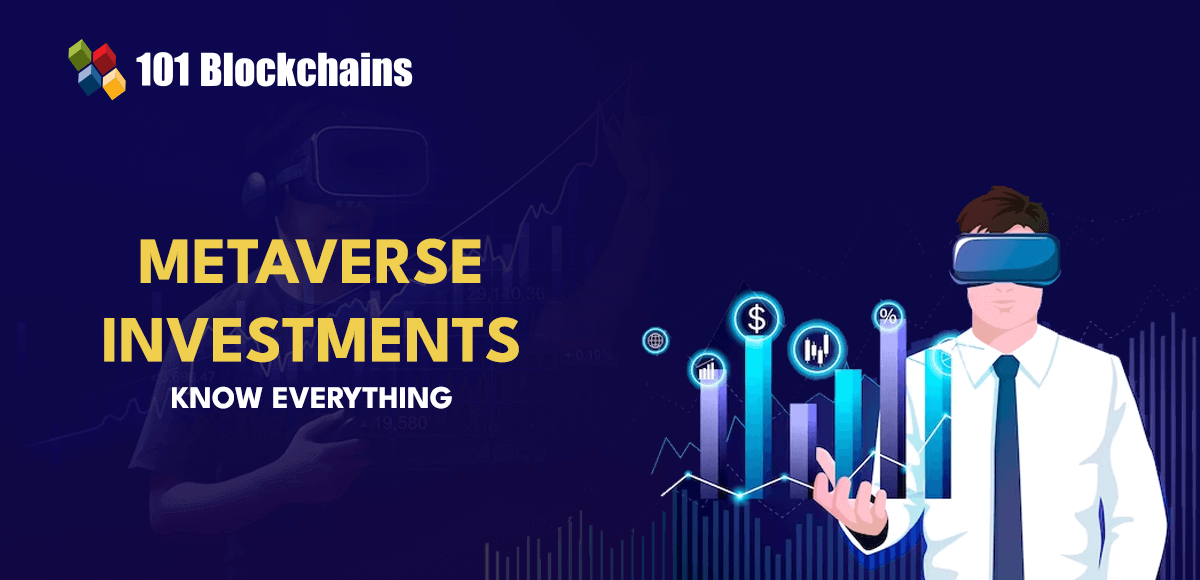Learn how blockchain truly works, master key definitions, and uncover what makes smart contracts so "smart." Dive into the fundamentals, gain valuable insights, and start your blockchain journey today!

- Metaverse
James Howell
- on February 24, 2022
Key Technologies that Power the Metaverse
Do you think AR and VR are only the driving forces behind the development of metaverse? Not so, there are more technologies with AR and VR which powers metaverse; read on to know about metaverse development technologies!
Digital experiences have been evolving, over the course of time, continuously improving with interactive elements. There was a time when people could communicate with each other through mail by post, which took many days. In the present times, technology helps us talk to friends across borders like they are sitting right next to us. The evolution of digital networks, high-speed communication, and the internet’s growth, in general, have fostered such advancements.
Now, the emphasis on metaverse development technologies draws attention towards a new age of the internet. Yes, you heard it right! The world is slowly gearing up to welcome the next iteration of the internet with the metaverse, a 3D digital world. Therefore, many are trying to figure out the potential technologies which can support the creation of the metaverse.
Many people would be quick to assume that VR and AR are the top technologies for metaverse, which is true to an extent. The point is VR and AR technologies are not the sole pillars on which the metaverse would develop. As of now, the concept of a metaverse is comparatively new and decades away from becoming fully operational.
However, big tech companies have shown their interest in the metaverse by introducing modern technologies for powering the metaverse. What are the key technologies for metaverse development? The following discussion helps you find the answer to this question with a clear impression of how each technology matters for the metaverse.
Why Should You Learn about Metaverse Technologies?
Before diving into an overview of metaverse development technologies, you should understand what the metaverse actually entails. The metaverse is an open, shared, and persistent digital environment with virtual spaces where users can enter as digital avatars. Users could interact with peers in the metaverse and participate in many other activities such as playing games. The metaverse also offers digital spaces for working in virtual offices or attending virtual concerts, or visiting virtual museums. The concept of a persistent digital world, similar to the real world in various aspects, has attracted attention towards the metaverse.
In addition, examples of gaming and socialization platforms like Decentraland, Axie Infinity, and The Sandbox show how metaverse offers value. However, it is also important to recall that the metaverse is still under development. In the long run, the use cases of metaverse would expand beyond gaming and social media platforms into various applications.
For instance, digital identity management, remote workspaces, and decentralized governance could be some of the promising functionalities you can discover with the metaverse. The potential of the metaverse for growth in the future is one of the prominent reasons for growing attention on top technologies for metaverse development.
Want to get an in-depth understanding of metaverse concepts? Enroll in Metaverse Fundamentals Course Now!
Recent Trends in the Metaverse Space
You need to take note of some of the specific trends in the domain of the metaverse to identify how different technologies aid the development of metaverse.
- Recently, in October 2021, Facebook rebranded to Meta and invested around $10 billion dollars in Reality Labs, a new division focused on metaverse content and hardware.
- Microsoft unveiled its metaverse-focused alternative, Microsoft Mesh, in November 2021, with immersive virtual spaces for users to collaborate on work. Microsoft Mesh enabled the functionalities of Microsoft Teams and other Microsoft solutions in one digital space for all users.
- Another notable player, NVidia, also launched the NVidia Omniverse as open platforms tailored for connecting 3D spaces to shared universes. The NVidia Omniverse offers a shared platform for virtual collaboration among creators, engineers, and designers.
- Most important of all, the growing curiosity around key technologies for metaverse development expands further with predictions for the metaverse. For instance, Bloomberg has reportedly stated that the global metaverse market would turn into an $800 billion market in 2022.
The existing trends in the metaverse space clearly show that it is a thriving ecosystem with many trustworthy names backing the metaverse. Therefore, one would reasonably wonder about the technological foundation of the metaverse.
Want to learn Metaverse concepts quickly? Check out Now Metaverse Flashcards and Metaverse FAQs
Technologies Powering the Metaverse

Please include attribution to 101blockchains.com with this graphic. <a href='https://101blockchains.com/blockchain-infographics/'> <img src='https://101blockchains.com/wp-content/uploads/2022/02/Technologies-Powering-the-Metaverse.png' alt='Technologies Powering the Metaverse='0' /> </a>
A clear overview of the basics of the metaverse and recent trends in the metaverse space showcase the possibilities for growth of the metaverse in future. However, the technologies behind the metaverse are the real thing when it comes to building the future of the metaverse. Here is an outline of the top technologies fuelling metaverse development.
-
Blockchain
One of the significant requirements in the metaverse is open design and transparency. The applications of blockchain technology in metaverse offer the decentralized and transparent environment required for the metaverse. With the help of blockchain, developers could introduce many functionalities in the metaverse. Some of them include digital verification of ownership, governance, value transfer, digital collectability, interoperability, and accessibility.
Most important of all, the role of blockchain as one of the top technologies for metaverse development is clearly evident in the use of crypto in the metaverse. Cryptocurrency is a vital requirement in the metaverse for transferring value. For instance, users can buy virtual real estate in Decentraland metaverse with their cryptocurrency.
You can purchase virtual real estate in the form of NFTs by paying in the game’s native crypto token, MANA. Therefore, you can clearly anticipate the importance of blockchain technology in metaverse development and its functionalities. Most important of all, blockchain technology helps in securing ownership of virtual real estate and other digital assets in the metaverse through NFTs.
Build your identity as a certified blockchain expert with 101 Blockchains’ Blockchain Certifications designed to provide enhanced career prospects.
-
AR and VR
Augmented Reality and Virtual Reality are the two massive engines that play a crucial role in facilitating virtual experiences. They are the essential metaverse development technologies for creating the immersive and engaging three-dimensional environments associated with the metaverse.
AR and VR basically serve as entry points for users into the metaverse. On the other hand, many people are confused about the differences between AR and VR. In many cases, you would find that people use the terms “metaverse” and “VR” interchangeably. However, there are some prominent differences between VR and the broader metaverse.
The applications of VR technology in metaverse point towards the connected VR experiences. For example, a shared meeting in VR shows how virtual reality can facilitate connected experiences. Many other new technologies are slowly evolving to complement VR for enhancing the engaging, immersive experiences in the metaverse.
For instance, virtual fitting rooms on online fashion stores have been productive interventions for improving ecommerce experiences. The metaverse can improve on such ideas for offering a virtual representation of a fashion store within the metaverse through VR. However, users can only see how the clothes in a fashion store look on their digital avatars in the metaverse through VR.
This is where you come across Augmented Reality or AR as another entry among key technologies for metaverse development. AR can play a crucial role in expanding the metaverse experience by enabling physical simulations with VR equipment. As a result, users can feel, hear and interact with the virtual spaces in metaverse as if they are actually present there. The combination of VR technology in the metaverse alongside AR would possibly drive massive investments from companies in development of AR and VR equipment.
-
Artificial Intelligence
Following the top technologies for metaverse development, Artificial Intelligence or AI is another prominent technology driver for creating the metaverse. AI has found many promising applications, especially in business strategy planning, facial recognition, decision making, analytics, and faster computing.
Now, experts have been pondering over the prospects of implementing AI in the development of highly engaging and immersive metaverse platforms. The best thing about using AI for automation in metaverse is the power for processing data at unbelievable speeds. The applications of AI in the metaverse would largely focus on evolution of non-player characters or NPCs in different contexts.
The processing abilities of AI make it one of the promising metaverse development technologies for the future. It can help in achieving realistic behavior from NPCs in response to the actions of the players. Another notable application of AI for automation in metaverse refers to possibilities for creating metaverse avatars. Based on 2D images or 3D scans of real users, AI can help in designing more dynamic and realistic digital avatars.
Excited to learn the fundamentals of AI applications in business? Enroll Now in AI For Business Course!
-
3D Reconstruction and IoT
The final set of technologies empowering the metaverse includes 3D reconstruction and Internet of Things or IoT. 3D reconstruction or spatial computing is important to create realistic spaces in the metaverse. It helps in maintaining photorealistic buildings, objects, and physical locations in the metaverse while following the general laws of physics and science.
On the other hand, the use of IoT as one of the key technologies for metaverse development can foster connections between the metaverse and many real-life devices. As a result, 3D reconstruction and IoT can support the creation of the metaverse as a digital world that is a replica of our real world.
Want to understand the fundamentals of the Internet of Things (IoT)? Enroll Now in IoT Fundamentals Course!
Bottom Line
On a final note, you can clearly notice how the top technologies for metaverse development have a unique role. Each technology serves a distinct purpose for supporting the overall vision of building the metaverse. The notable technologies underlying the metaverse are blockchain, AR and VR, AI and 3D reconstruction, and IoT.
All of these technologies serve as the major drivers of functionalities envisioned for the metaverse. Starting from open accessibility, interoperability, and an open economy to almost real-life experiences in the metaverse, the key technologies serve many prolific use cases of the metaverse. Learn more about the metaverse to know how it will shape up the future.
*Disclaimer: The article should not be taken as, and is not intended to provide any investment advice. Claims made in this article do not constitute investment advice and should not be taken as such. 101 Blockchains shall not be responsible for any loss sustained by any person who relies on this article. Do your own research!






